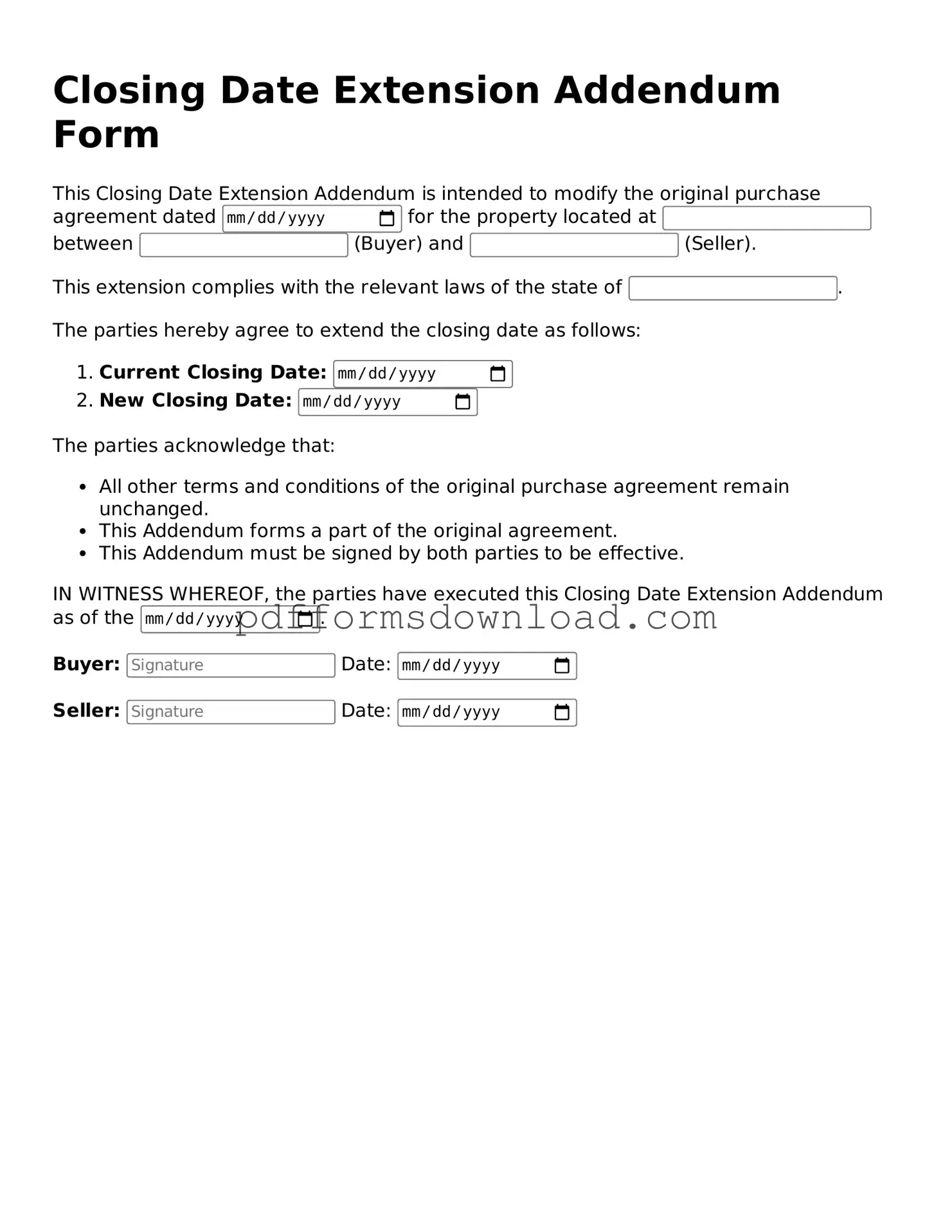What is a Closing Date Extension Addendum Form?
The Closing Date Extension Addendum Form is a document used in real estate transactions. It allows the parties involved to extend the closing date of a property sale. This extension can be necessary for various reasons, such as delays in financing, inspections, or other contingencies that must be satisfied before the sale can proceed. By using this addendum, both the buyer and seller can agree on a new closing date, ensuring that all parties are on the same page regarding the timeline of the transaction.
When should I use the Closing Date Extension Addendum Form?
This form should be used when either party involved in the transaction realizes that the original closing date cannot be met. Common scenarios include delays in obtaining a mortgage, issues found during a home inspection, or the need for additional time to finalize necessary paperwork. It is important to address these delays promptly to avoid potential conflicts or misunderstandings between the buyer and seller.
How do I fill out the Closing Date Extension Addendum Form?
To fill out the form, both parties should provide their names and contact information. Next, indicate the original closing date and the new proposed closing date. Ensure that both parties agree to the new date by signing and dating the form. It is advisable to keep a copy for your records and to provide a copy to all parties involved in the transaction. Accurate completion of the form helps prevent future disputes and keeps the transaction on track.
Is the Closing Date Extension Addendum Form legally binding?
Yes, once both parties sign the Closing Date Extension Addendum Form, it becomes a legally binding document. This means that both the buyer and seller are obligated to adhere to the new closing date specified in the addendum. It is crucial that all parties fully understand the terms outlined in the form before signing, as it modifies the original purchase agreement. If there are any concerns or questions, consulting a legal professional is recommended to ensure clarity and compliance.
